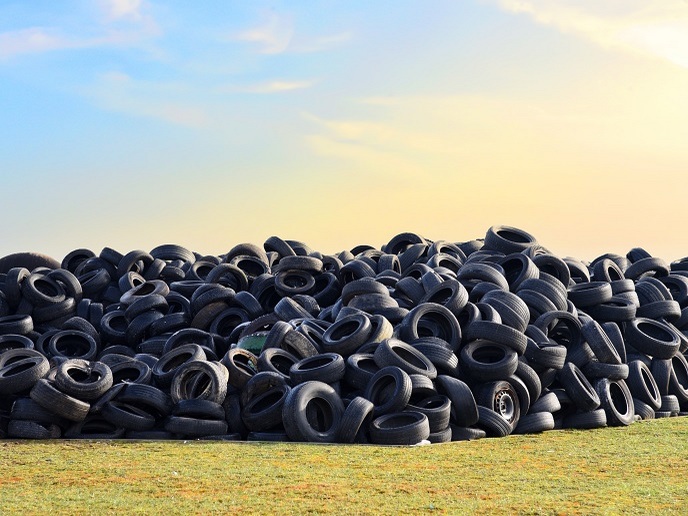Achieving complete recycling of rubber
End-of-life tyres (ELTs) must be properly managed to avoid potential environmental and safety problems. Once the tyres are collected by the different management systems, they are taken to authorised managers, who separate them into their different components, such as steel, rubber and other polymers. The rubber that has undergone a vulcanisation process and is no longer thermoplastic, can therefore no longer be melted and used as a raw material again. Reusing old tyres as filler material in construction projects, as infills in sports fields, or as fuel in power plants, or turning them into second-hand products fall short of exploiting all the rubber from tyres. The EU funded VALUE-RUBBER(opens in new window) project tried to go one step further in the way of reusing rubber and achieved a product ready to be used again in many of the rubber industry’s products.
One step away from substituting virgin rubber
VALUE-RUBBER introduced an ingenious combination of microwave technology together with classical extrusion to obtain high-quality de-vulcanised rubber. “This de-vulcanised rubber can be re-vulcanised to obtain new parts such as gaskets, profiles, bumpers, shoe soles, and more products,” explains project coordinator Alejandro Arribas Agüero. “This makes us more independent from raw material sources, which are outside Europe”. The innovative technology is able to become a complete substitute for virgin rubbers in conventional manufacturing processes, for certain applications. In fact, the project’s industrial partners have already demonstrated the potential of the VALUE-RUBBER product in the railway sector and the shoe manufacturing industry.
Dealing with the challenges of the rubber vulcanisation process
A multistep process such as vulcanisation(opens in new window) entails resolving diverse successive issues. From a technical standpoint, the most crucial problem in the project was matching the exact energy to break the carbon-sulfur bonds of the vulcanisation without breaking the carbon carbon bonds of the rubber. The modification of the microwave generator design and the tests and adjustments made by the VALUE RUBBER team have made it possible to solve this problem. Another matter to be resolved was the heat dissipation of the rubber after undergoing microwaving. An additional cooling system had to be enabled, which was not foreseen, to prevent the degradation of the rubber.
Sustainable rubber recycling for a better future
The beneficiaries of the VALUE-RUBBER project are small and medium-sized companies, which will be able to access a new source of raw materials at a reasonable price. “Most importantly, the main beneficiary is the environment itself, since there will no longer be accumulations of tyres in controlled landfills,” stresses Arribas Agüero. “Moreover, a major beneficiary will be society, as VALUE-RUBBER can contribute to the creation of many jobs related to the rubber industry.” Regarding the next steps, the project team has spoken with ELTs managers to improve pretreatment so that tyres arrive in optimal conditions for the devulcanisation process. Perfectly feasible and reasonable scaling and business plans have been elaborated. “We are looking for an investor willing to build an industrial plant capable of processing at least 20 tonnes per hour,” shares with us Arribas Agüero. In the meantime, the project partners continue to collaborate and improve the VALUE-RUBBER technology.







